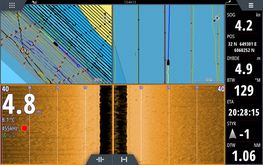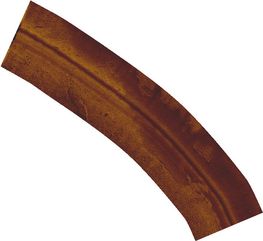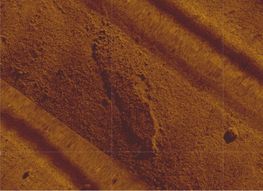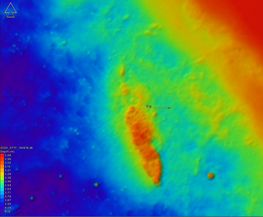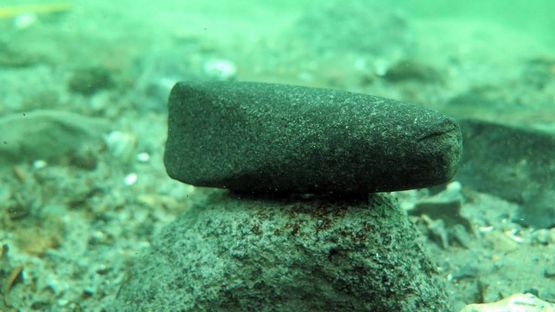
Survey - Locating submerged sites
Archaeologists utilise various methods for locating shipwrecks and Stone Age settlements.
Objects exposed above the seabed can be located using a side scan sonar - an echosounder looking sideways.
Wrecks and settlement sites covered by sediments can be revealed by a magnetometer or a sub-bottom profiler, capable of identifying geological layers as well as single objects buried below the seabed.
The present seabed topography can be mapped in great detail using a multibeam echosounder emitting acoustic pulses in many directions simultaneously.
In shallow water wrecks and built structures can be seen on aerial photos; either by studying publicly available photos or by observations and pictures taken from an aircraft or unmanned drone.
Cooperation with local people, divers and other maritime professionals is also important as these people often have considerable knowledge of the whereabouts of shipwrecks and settlements.
Side scan sonar
A side scan sonar consists of a transducer, either mounted on the hull or towed behind the survey vessel. When the sound waves emitted by the transducer hit an object in the water, they are reflected back. The time taken for the signal to return reveals the position of the object and the amplitude can reveal information about the density of the material. The resulting image is seen on a monitor or printer onboard the survey ship. The display or printout identifies shipwrecks, shoals of fish and various types of seabed.
Magnetometer
A magnetometer measures the current magnetic field on the seabed. If it passes over large iron objects, the strength of the magnetic field is altered. The magnetometer records such changes, displaying them on a monitor or printer onboard the survey vessel.The magnetometer is always towed behind the vessel to eliminate electromagnetic noise.
Sub-bottom profiler
A sub-bottom profiler emits sound waves through the water to the seabed. Different systems operate at different frequencies depending on the desired target: high resolution or deep penetration. When the signals meet various layers in the seabed, they are reflected back towards the surface, where they are intercepted by a receiver, which records the time taken by the signals to travel from the sea surface to the specific layer and back again. The result is displayed on a computer monitor.
